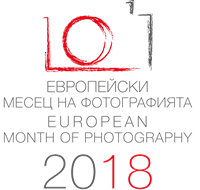Спекулативният реализъм в теорията на фотографията разглежда отворения прозорец, с който Алберти описва перспективата, като общ онтологически модел на достъпност до обекта. Какви са основанията за тази редукцията и с какво подобно обобщение ощетява прилагането на изследователски, аналитични и критически методи към фотографията? В известната си статия за фотографската прозрачност и реалистичност американският философ Кендал Уолтън посочва степени и аспекти на прозрачност, като дава за пример перспективни изкривявания, грешки в експозицията и неострота. Лекцията продължава тази аналитична посока като цели да изясни метафората за прозореца не като общ онтологически модел, а като аналогия описваща перцептивна ситуация.
Метафората за прозореца е разгледана в теоретични конструкции на възможни „прегради“ и вътрешни „рамки“ на възприятието, които проблематизират самоочевидните граници и безусловна отвореност на кадровото пространство. В прозореца са възможни много метафори: лупа, решетка, ключалка. Чисто оптически фотографският кадър е „прозорец“ в тунел, а с това и метафората за тунела изглежда незаслужено пренебрегната. Тунелът изразява ограниченото възприятие и отдалечената достъпност на обектите интерпретирани в съвременната фотография на Бил Хенсън, Филип-Лорка Ди Корсия, Стивън Пипин и др, чиято работа ще бъде анализирана в лекцията.
За лектора:
Д-р Лиляна Караджова е преподавател по история и теория на фотографията в НХА и НБУ, куратор и автор на художествена критика в сп. „Изкуство и критика“ и в. „Култура“, дългогодишен автор в сп. L’Europeo, но също така фотограф представен в няколко самостоятелни и десетки колективни изложби. Интересите й са в областите на психологията на изкуството и фотографията, с темата на дисертационния труд „Психологически концепции за въображение в изкуството и фотографията на XX и XXI век“. Работата й е насочена към изследването на връзки между класически и съвременни специфики на фотографията.
Speculative realism in the theory of photography sees the open window, through which Alberti describes perspective, as a general ontological model of accessibility to the object. What are the grounds for this reduction and how such generalization undermines the employment of explorative, analytical and critical approaches to photography? In his famous article on photographic transparency and photographic realism, the American philosopher Kendall Walton describes degrees and aspects of transparency, suggesting as an example distortions of perspective, faults in exposure and lack of sharpness. The lecture follows this analytical line, aiming at clarifying the window metaphor as not being a general ontological model but rather an analogy depicting a perceptive situation.
The window metaphor is addressed in theoretical constructs of possible “barriers” and internal “framework” of perception which question the self-evident boundaries and unconditional openness of the photo frame space. Many metaphors are probable in the window: a magnifying glass, bars, keyholes. From an essentially optical point of view, the photo frame is a “window” within a tunnel and thus the tunnel metaphor seems to be unreasonably neglected. The tunnel expresses the narrowed perception and the remote accessibility of objects interpreted in the contemporary photography of Bill Henson, Philip-Lorca diCorcia, Steven Pippin and others whose works will be analyzed in the course of the lecture.
About the Lecturer:
Dr. Lilyana Karadzhova is a lecturer in history and theory of photography at the National Academy of Art and the New Bulgarian University, curator and author of art criticism works for the Art and Criticism magazine, the Culture newspaper and is a long-time contributor to the L’Europeo magazine, being at the same time a photographer presented in several solo and numerous collective exhibitions. Her interests embrace the area of psychology of art and photography. The theme of her thesis is “Psychological concepts of imagination in the XX and XXI century art and photography”. Her work is directed at the exploration of the correlations between classical and contemporary specifics of photography.
|






